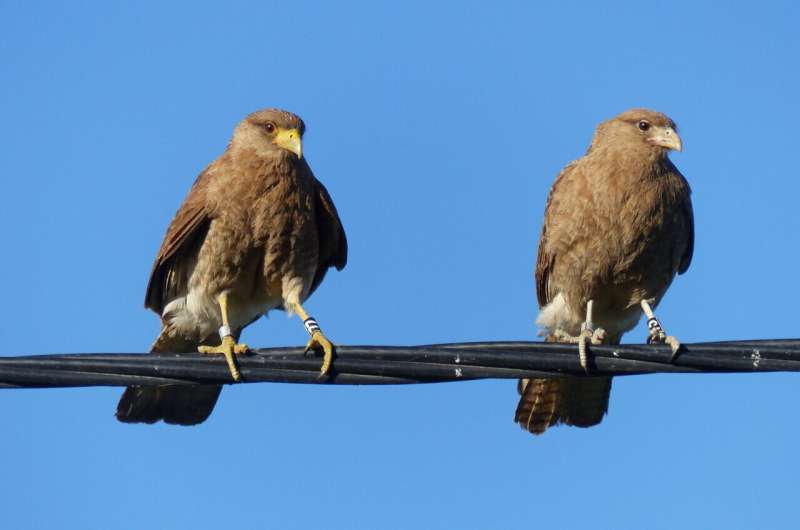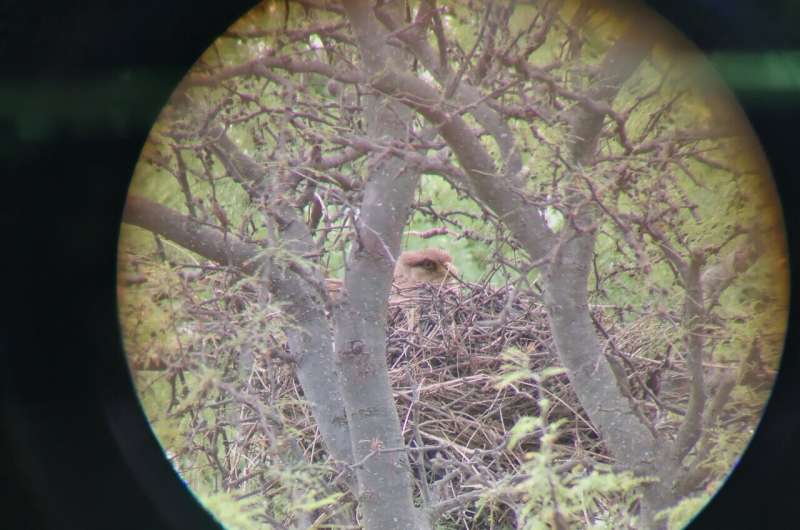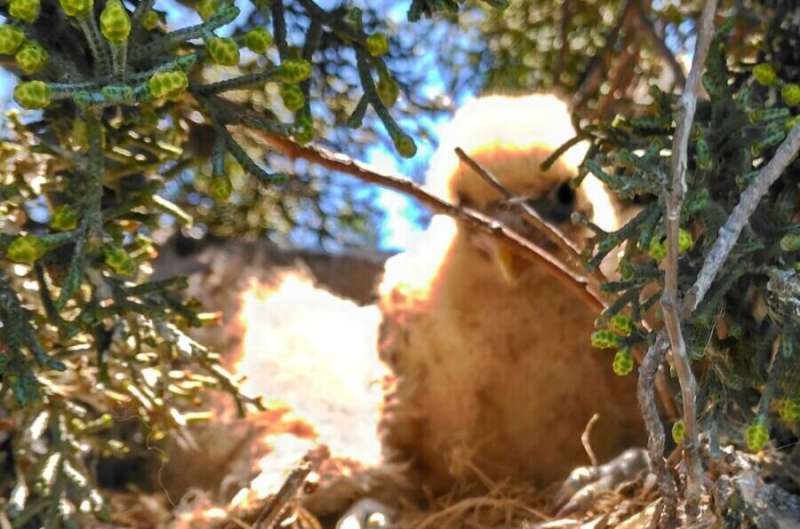This article has been reviewed according to Science X's editorial process and policies. Editors have highlighted the following attributes while ensuring the content's credibility:
fact-checked
proofread
Parents of the year: Scavenging raptors demonstrate high level of collaboration in raising chicks

Let's face it, scavengers have a bad reputation. However, according to a new paper published in the Journal of Raptor Research, pairs of scavenging falcons called Chimango caracaras (Milvago chimango) demonstrate an endearing level of collaboration while raising their chicks.
In their paper, "Biparental Care in a Generalist Raptor, the Chimango Caracara in Central Argentina" Diego Gallego-García from the Center for the Study and Conservation of Birds of Prey in Argentina (CECARA) and co-authors share results from a two-year study on the nesting behaviors of Chimango parents.
This is the first study of its kind for the species. As a group, caracaras remain relatively unstudied, yet they are notably curious, creative, and charismatic birds. The existing knowledge gaps on topics of caracara life history limit our collective understanding of their population dynamics, ecological contributions, and species-specific conservation status. More studies like this one could expand our caracara consciousness.
Chimango caracaras are common across central Argentina, where this study occurred, and they are one of nine species of living caracaras, all of which live in the Americas and nowhere else. Generally, raptor species with a large size difference between the sexes exhibit a clear division of parental responsibility—the larger female incubates the eggs, takes care of the nestlings, and defends the nest, while the smaller male hunts for prey.

Chimango caracaras, however, show little difference in size between the sexes and are both predators and scavengers, which means their food sources are relatively unpredictable. Therefore, dividing the workload of feeding and caring for young could be the best path to success. This is what Gallego-García's team set out to investigate.
The team observed 70 Chimango caracara nests during the breeding seasons of 2016 and 2017 and confirmed that pairs shared most parental responsibilities at the nest, namely incubation, brooding, and food deliveries. In addition to splitting the workload, the male and female chimangos in this study demonstrated a detailed understanding of their chicks' needs throughout all stages of development.
For example, during the early days of nestling development, when they could not thermoregulate properly, parents devoted more time to brooding in the morning, when temperatures were lower. Additionally, as chicks grew, they underwent an uptick in food requirements during peak development, and the chimango parents matched this by bringing in more food.

Studying the home lives of raptors can help illuminate the big picture of how food webs are faring. According to Gallego-García, "The importance of studying raptor reproductive biology goes beyond the conservation of the species themselves. Raptors occupy the highest position in the food chain, and thus control populations of prey species below. We need to know what happens during reproduction, which is one of their most important and fragile life stages."
Gallego-García also says that many landowners in the area are happy to learn more about their backyard caracaras, a trend that will hopefully continue. "Most of them call us when they find an injured chimango, or a dead nestling, or a new active nest. In return, we invite them to attend banding days with nestlings."
Gallego-García and co-authors suggest future research on reproductive success across larger parts of the range of this species, and would like to investigate survival estimates of fledglings after they disperse from the breeding area and become independent. Hopefully, more support for such research will lead to a stronger foundational knowledge of these unique raptors and their contributions to ecosystem health, the details of which we are just beginning to understand.
More information: Diego Gallego-García et al, Biparental Care in a Generalist Raptor, the Chimango Caracara in Central Argentina, Journal of Raptor Research (2024). DOI: 10.3356/JRR-23-16
Provided by Raptor Research Foundation




















